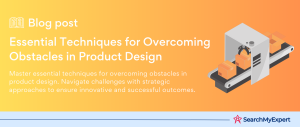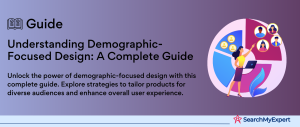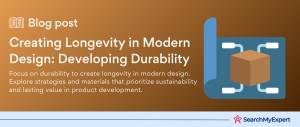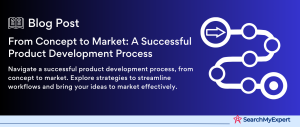Principles of Good Product Design
Good Product Design: The Foundation of User Satisfaction and Market Success
In the realm of business and technology, good product design stands as a beacon, illuminating the path to success. It’s more than just an aesthetic endeavor; it’s a comprehensive process that merges form, function, and experience into a harmonious whole. By diving into what constitutes good product design and unraveling its importance, we can grasp why it’s the cornerstone of user satisfaction and market success.
What Constitutes Good Product Design?
Good product design is akin to a three-legged stool, each leg representing a vital component: user experience, problem-solving, and aesthetics.
- User Experience (UX): At its heart, good design prioritizes the user. It’s not just about how a product looks but how it feels in the user’s hands, and how intuitive and enjoyable it is to use. This aspect of design focuses on ergonomics, usability, and accessibility, ensuring that the product isn’t just beautiful, but it’s also functional and easy to use.
- Problem-Solving:
Design isn’t just art; it’s a solution. The best designs emerge from a deep understanding of the problems they intend to solve. This involves research, understanding user needs, and creatively addressing these needs. A well-designed product solves problems seamlessly, often in ways that users didn’t even know they needed. - Aesthetics:
The visual appeal of a product cannot be understated. Aesthetics play a crucial role in attracting users and can significantly influence their perception of quality and reliability. Good design marries functionality with visual elegance, creating products that are not only efficient but also visually appealing.
The Benefits of Good Product Design
Embracing good product design is not just a matter of aesthetics; it’s a strategic business decision with numerous benefits.
- User Satisfaction: A well-designed product is like a silent ambassador of user satisfaction. When users find a product easy, enjoyable, and efficient to use, their satisfaction levels soar. This satisfaction is the first step in building a loyal customer base.
- Increased Adoption: Good design can be the tipping point in a user’s decision to choose one product over another. It can drive adoption, especially in markets saturated with similar offerings. A well-designed product stands out, making it more likely to be adopted by users.
- Brand Loyalty: Products that deliver on their promise through excellent design foster brand loyalty. Users who have positive experiences with a product are more likely to return to the same brand for future purchases.
- Market Success: Ultimately, good design translates into market success. Products that are well-designed often see higher sales, better market penetration, and can command a premium price. They also tend to have a longer market life, as good design is timeless.
Core Principles of Good Design
The essence of good product design lies in its ability to resonate with users, providing them with a seamless, intuitive, and enjoyable experience. To achieve this, designers must adhere to core principles that form the bedrock of effective design. These principles include user-centeredness, usability, functionality, aesthetics, and clarity and simplicity. Let’s delve into each of these aspects to understand how they contribute to the creation of exceptional products.
User-Centeredness: Understanding User Needs and Expectations
User-centeredness is the guiding star in the design universe. It underscores the importance of deeply understanding user needs, behaviors, and expectations throughout the design process. This approach involves several key elements:
- Empathy:
Understanding users isn’t just about analyzing data; it’s about empathy. Designers need to put themselves in the users’ shoes, understanding their challenges, desires, and environment. - Research and Feedback: Effective design is often born out of rigorous user research, including surveys, interviews, and usability testing. Continuous feedback loops help refine the product to better meet user needs.
- Diversity and Inclusion: Recognizing the diverse nature of users is crucial. Design should cater to a wide range of demographics, cultures, and abilities, ensuring inclusivity and accessibility.
- Anticipating Needs:
Sometimes users might not know what they need until they see it. User-centered design also involves anticipating future needs and trends, staying one step ahead of user expectations.
Usability: Ensuring Ease of Use and Navigation
Usability is the bridge that connects users to a product, ensuring that it is easy to learn, use, and navigate. This principle is essential for creating products that are accessible to a wide range of users, including those with different abilities and limitations. Key aspects include:
- Intuitive Design: The design should be intuitive, allowing users to navigate and operate the product with minimal instruction or confusion.
- Consistency: Consistent design across a product helps users quickly learn and become comfortable with it.
- Feedback and Error Management:
The product should provide clear feedback in response to user actions and offer straightforward solutions for error management. - Accessibility: Designing for accessibility means considering users with disabilities, and ensuring that the product is usable by everyone, regardless of their physical or cognitive abilities.
Functionality: Fulfilling the Intended Purpose Effectively
Functionality is the heart of product design. A product must not only look good but also perform its intended function effectively and efficiently. This involves:
- Performance and Reliability: The product should perform its intended function reliably under various conditions and over time.
- Efficiency: Design should facilitate efficiency, enabling users to achieve their goals with minimum effort and time.
- Flexibility:
Good design accommodates various user preferences and abilities, offering flexibility in how the product can be used. - Problem-solving: The product should solve specific problems, addressing the core needs for which it was designed.
Aesthetics: Creating Visually Appealing and Emotionally Connective Products
Aesthetics play a pivotal role in product design, as the visual appeal and emotional connection of a product significantly influence user perception and desirability. Key elements include:
- Visual Harmony: Good design achieves a balance in color, shape, and texture, creating visual harmony that is pleasing to the eye.
- Emotional Connection: Products that evoke positive emotions tend to create a stronger connection with users, often influencing their purchase decisions.
- Brand Identity: Aesthetics should align with the brand’s identity, reinforcing the brand’s values and message through design.
Clarity and Simplicity: The Art of Making Complex Simple
Clarity and simplicity are essential in making products approachable and user-friendly. This involves:
- Clear Communication:
Every element of the design should communicate its function clearly and unambiguously. - Intuitive Interactions:
Interactions with the product should be straightforward, avoiding unnecessary complexity. - Minimalism: A minimalist approach, focusing on essential elements, can enhance usability and aesthetic appeal.
Additional Considerations in Product Design: Sustainability, Accessibility, and Brand Identity
Beyond the core principles of good design, there are additional considerations that play a critical role in shaping successful products. These include sustainability, accessibility, branding, and identity. Each of these factors not only contributes to the overall quality and appeal of a product but also reflects the values and ethos of the brand behind it.
Sustainability: Designing with an Eye on the Environment and Ethics
In today’s environmentally conscious world, sustainability is no longer an option but a necessity in product design. This involves several key considerations:
- Eco-Friendly Materials:
The choice of materials is pivotal in sustainable design. Using recyclable, biodegradable, or sustainably sourced materials reduces the environmental footprint of products. - Resource Optimization: Efficient use of resources, including energy, water, and raw materials, is crucial. This involves optimizing manufacturing processes to minimize waste and conserve resources.
- Lifecycle Analysis:
Considering the entire lifecycle of a product, from production to disposal, helps in designing more sustainable products. This includes designing for longevity, repairability, and recyclability. - Ethical Considerations:
Sustainable design also encompasses ethical aspects such as fair labor practices and avoiding materials that are harmful to people or the environment.
Sustainable design is not just beneficial for the environment; it also resonates with increasingly eco-conscious consumers and can enhance a brand’s reputation and appeal.
Accessibility: Creating Products Usable by Everyone
Accessibility in design ensures that products are usable by people with a range of abilities, including those with visual, auditory, motor, and cognitive impairments. This is essential for creating inclusive products that cater to all users. Key aspects include:
- Universal Design:
Designing products that are usable by the widest range of people possible, regardless of age or ability, is the goal of universal design. - Assistive Technologies:
Incorporating features that are compatible with assistive technologies, like screen readers for the visually impaired or subtitles for the hearing impaired, makes products more accessible. - Ergonomics:
Considering the physical interaction between the user and the product, especially for those with motor impairments, is crucial. This involves designing products that are easy to handle and operate. - Cognitive Accessibility: Simplifying complex information, using clear language, and providing intuitive navigation helps users with cognitive impairments.
Accessibility in design not only fulfills legal and moral obligations but also opens up the market to a wider audience, creating opportunities for greater adoption and customer loyalty.
Branding and Identity: The Role of Design in Conveying Brand Values
The design of a product is a powerful tool in building and conveying a brand’s identity and values. This is achieved through various design decisions:
- Visual Identity:
The visual aspects of a product, including color, shape, and texture, should align with the brand’s identity, creating a consistent and recognizable look. - Brand Values:
Design decisions should reflect the brand’s values, whether it’s luxury, sustainability, innovation, or user-friendliness. This helps in building a brand image that resonates with the target audience. - Emotional Connection:
Products that evoke the right emotions can strengthen the bond between the brand and its customers. Design elements that trigger these emotions can be particularly effective in brand loyalty. - Differentiation: In a crowded market, unique design elements can differentiate a brand from its competitors, making its products stand out.
Design Process and Tools
In the world of product design, the journey from an initial concept to a fully realized product is both complex and fascinating. This journey is navigated through a structured design process, leveraging various tools and methods, and underscored by effective collaboration and communication among diverse stakeholders. Let’s explore these aspects to understand how they collectively contribute to the creation of successful products.
Design Thinking: An Iterative Process for Innovative Solutions
Design thinking is a user-centric approach that guides designers through an iterative process to solve complex problems and create innovative solutions. This process typically involves several key stages:
- Empathy Research:
This initial stage is about understanding the users’ needs, emotions, and motivations. It involves engaging with users, observing their behaviors, and gathering insights to empathize with their experiences. - Ideation: Here, designers brainstorm a wide range of creative solutions, drawing from the insights gained during empathy research. This stage encourages thinking outside the box and generating multiple ideas.
- Prototyping:
Prototypes are early versions of a product, created to test and refine ideas. They can range from simple sketches to more sophisticated models, allowing designers to explore how their ideas translate into physical form. - Testing: In this stage, prototypes are tested with users to gather feedback. This feedback is crucial for refining the design, and ensuring it meets user needs and expectations. The process is iterative, often cycling back to earlier stages based on insights from testing.
Design thinking is not a linear process but a fluid journey that adapts to the unique challenges and opportunities of each project.
Design Tools and Methods: Equipping Designers for Success
The design process is supported by a variety of tools and methods that help bring ideas to life. These include:
- User Research Methods: Techniques such as surveys, interviews, user personas, and usability testing provide valuable insights into user needs and behaviors.
- Prototyping Tools: From paper sketches to digital tools like Adobe XD or Sketch, these tools help designers create and refine their ideas in tangible forms.
- UI/UX Design Software:
Software like Figma, InVision, and Adobe Illustrator is essential for designing the user interface (UI) and user experience (UX) of digital products. These tools allow for the creation of wireframes, mockups, and interactive prototypes.
The choice of tools and methods often depends on the project’s specific requirements, the designers’ expertise, and the stage of the design process.
Collaboration and Communication: The Backbone of Successful Design
Effective collaboration and communication among various stakeholders are critical to the success of any design project. This involves:
- Cross-Disciplinary Teams:
Design projects often involve a diverse group of professionals, including designers, engineers, marketers, and product managers. Collaborating across disciplines brings a wealth of perspectives and expertise to the project. - Open Communication: Clear and continuous communication is vital to ensure that everyone is aligned with the project’s goals and progress. This includes regular meetings, sharing updates, and soliciting feedback from all stakeholders.
- Feedback Loops: Establishing effective feedback loops within the team and with users is essential for refining designs and ensuring they meet the intended goals.
Examples of Good Product Design: Analyzing Real-World Successes
The landscape of product design is dotted with numerous examples that not only resonate with users but also set benchmarks in their respective industries. By examining real-world products that exemplify the principles of good design, we can gain insights into what makes them successful and identify areas for potential improvement. This analysis helps in understanding the practical application of design principles and offers valuable lessons for aspiring designers and businesses.
Apple iPhone: A Paradigm of User-Centric Design
The Apple iPhone stands as a quintessential example of excellent product design. Its success can be attributed to several key factors:
- User Experience (UX): The iPhone offers an intuitive and seamless user experience. Its simple, clean interface is easy to navigate, making it accessible to a wide range of users.
- Aesthetics:
Apple has consistently focused on sleek and minimalist design, making the iPhone not just a gadget but a fashion statement. - Functionality:
Each iteration of the iPhone brings with it enhanced features and capabilities, staying true to its promise of being a powerful and versatile device. - Brand Identity: The iPhone strongly reflects Apple’s brand values of innovation, quality, and luxury.
Areas for Improvement:
Despite its successes, the iPhone could improve in areas like battery life, affordability, and more environmentally sustainable manufacturing practices.
Tesla Model S: Redefining Electric Vehicles
Tesla’s Model S is another remarkable example of good product design, especially in the automotive sector.
- Innovation:
The Model S broke the stereotype of electric vehicles (EVs) being sluggish and unattractive. It offers high performance and sleek design, making it desirable. - Sustainability:
As an EV, the Model S aligns with the growing demand for sustainable transportation solutions. - User Interface:
The car’s interface is user-friendly, featuring a large touchscreen that controls most of the car’s functions, simplifying the user experience.
Areas for Improvement:
The high cost of Tesla vehicles limits their accessibility. Additionally, the reliance on proprietary charging stations can be inconvenient for users.
Dyson Air Multiplier: Revolutionizing Everyday Appliances
The Dyson Air Multiplier fan exemplifies innovative design in a common household appliance.
- Aesthetics and Innovation:
The bladeless design is not only visually striking but also innovative, offering a safer and quieter alternative to traditional fans. - Usability: Its simple and intuitive controls make it easy for users of all ages to operate.
- Brand Identity:
This product reinforces Dyson’s reputation for transforming ordinary products into extraordinary experiences.
Areas for Improvement:
The high price point of Dyson products can be a barrier for many consumers, and there is room for making their products more affordable.
Google Search Engine: Simplicity in Digital Product Design
Google’s search engine is a prime example of digital product design done right.
- Simplicity and Clarity: Google’s clean and uncluttered interface makes information search straightforward for users.
- Functionality: It delivers accurate and quick search results, consistently fulfilling its core function.
- Brand Identity: The search engine’s design aligns with Google’s philosophy of simplicity and efficiency.
Areas for Improvement:
Privacy concerns and data collection practices have been points of contention for users, indicating a need for greater transparency and user control.
IKEA Furniture: Democratizing Design
IKEA’s furniture designs are acclaimed for their affordability, functionality, and aesthetic appeal.
- Accessibility and Functionality: IKEA has made well-designed furniture accessible to a wide audience through its cost-effective solutions.
- Sustainability: IKEA focuses on using sustainable materials and efficient manufacturing processes.
- User Experience: The DIY aspect of IKEA furniture empowers users with a sense of accomplishment, though it can sometimes be challenging.
Embracing the Essence of Good Product Design for Lasting Success
The journey through the multifaceted world of product design culminates in a deep appreciation of its critical role in shaping successful products and brands. This comprehensive exploration highlights the undeniable importance of applying good product design principles. Here, we summarize the key takeaways and encourage an ongoing commitment to learning and refinement in the field of product design.
Summarizing Key Takeaways
- The Pillars of Good Design:
Good product design is anchored in user-centeredness, functionality, aesthetics, usability, and clarity. These principles are vital in creating products that are not only appealing and functional but also resonate deeply with users. - Additional Considerations: Sustainability, accessibility, and brand identity play a crucial role in modern product design. They extend the scope of design beyond aesthetics and functionality, encompassing ethical, inclusive, and strategic brand elements.
- The Design Process and Tools: The design thinking process, encompassing empathy, ideation, prototyping, and testing, is fundamental to developing innovative solutions. Utilizing a diverse range of tools and methods, and fostering collaboration and communication, are key to navigating this process effectively.
- Learning from Real-World Examples: Analyzing successful products like the iPhone, Tesla Model S, Dyson Air Multiplier, Google Search, and IKEA furniture provides valuable insights into the practical application of design principles and areas for improvement.
- Ongoing Learning and Exploration:
The field of product design is dynamic and ever-evolving. Continuous learning, staying abreast of emerging trends, and experimenting with new ideas are essential for designers to refine their craft and remain competitive.
The Importance of Good Product Design
Good product design is not just about creating a visually appealing object; it’s about crafting experiences that enrich lives and meet users’ needs most efficiently and enjoyably. It has the power to drive innovation, foster brand loyalty, and ensure long-term success in a competitive marketplace. Good design goes beyond the surface, encapsulating functionality, sustainability, and emotional connection, making products not just usable but desirable.
Encouraging Ongoing Learning and Exploration
The journey in product design does not end; it evolves. Designers and enthusiasts are encouraged to continue exploring and learning. Here are some ways to stay engaged and inspired:
- Follow Industry Leaders and Innovators:
Keep up with the latest trends and insights by following industry leaders and innovators on social media, blogs, and podcasts. - Participate in Workshops and Conferences: Engaging in workshops, webinars, and conferences is a great way to learn new skills and network with other professionals.
- Experiment with New Tools and Techniques:
Don’t be afraid to experiment with new design tools and techniques. This hands-on experience is invaluable in understanding what works and what doesn’t. - Read Extensively: Books and articles on design theory, case studies, and emerging trends can provide deeper insights and broaden your understanding.
- Seek Feedback and Collaborate: Collaboration with peers and seeking feedback can provide new perspectives and ideas, fostering growth and innovation.
Conclusion:
In navigating the intricate landscape of product design, we’ve unearthed the foundational principles, processes, and tools that guide the creation of outstanding products. Our journey through real-world examples has offered a lens into the practical application and impact of these design principles. As we conclude, it’s clear that good product design is more than aesthetics; it’s about meeting user needs effectively and creatively, fostering brand loyalty, and driving market success. For aspiring and seasoned designers alike, this exploration serves as a reminder of the power of good design and the importance of continual learning and adaptation in this dynamic field. The future of product design is ripe with possibilities, ready to be shaped by innovative and thoughtful design approaches.
Craft market-ready designs with expert Product Design Firms .
Table of Contents
Toggle






